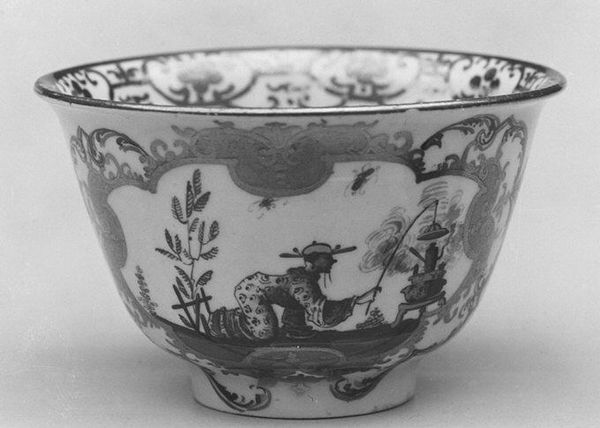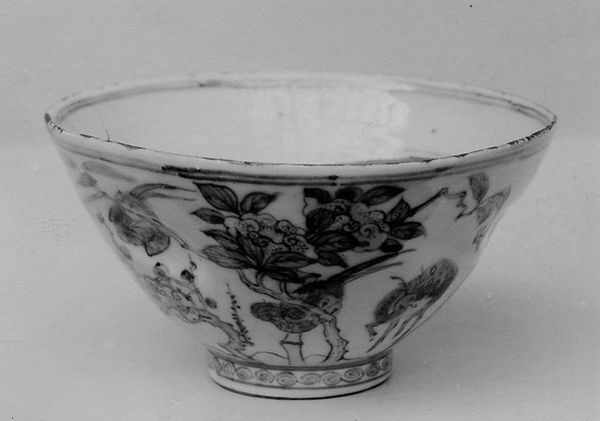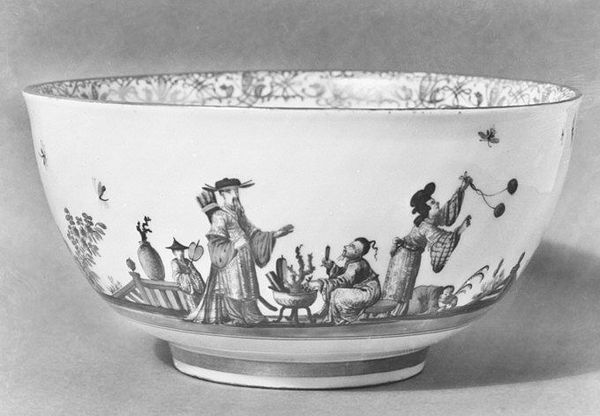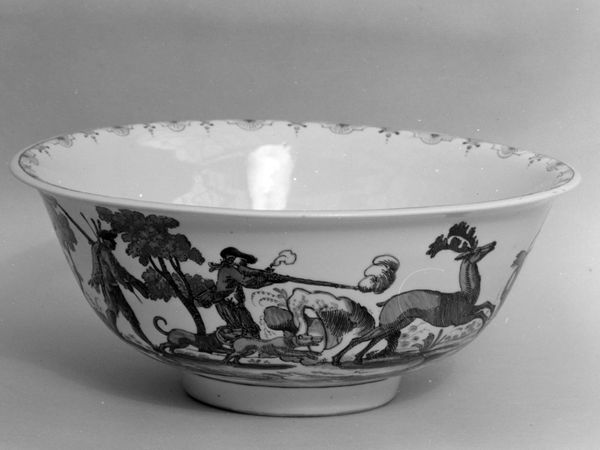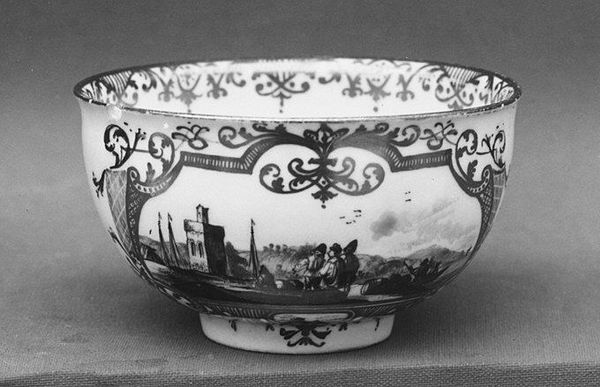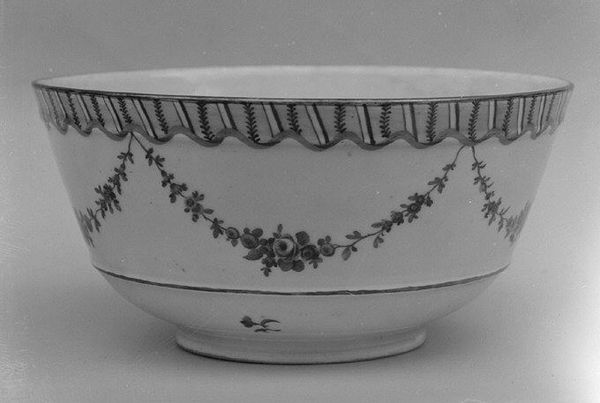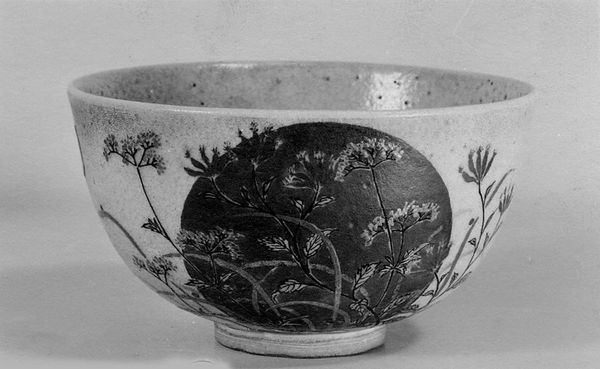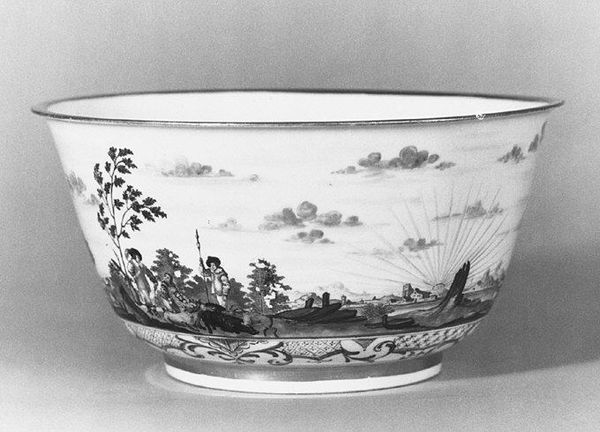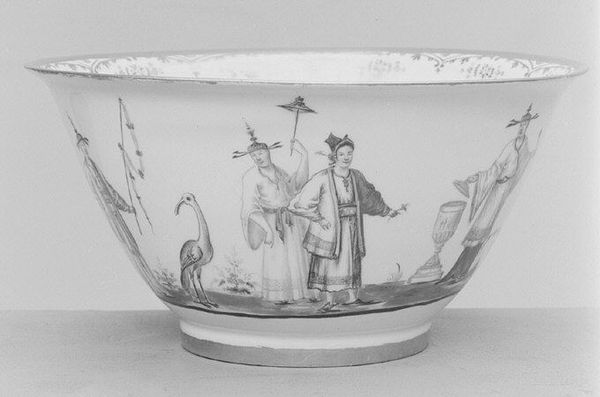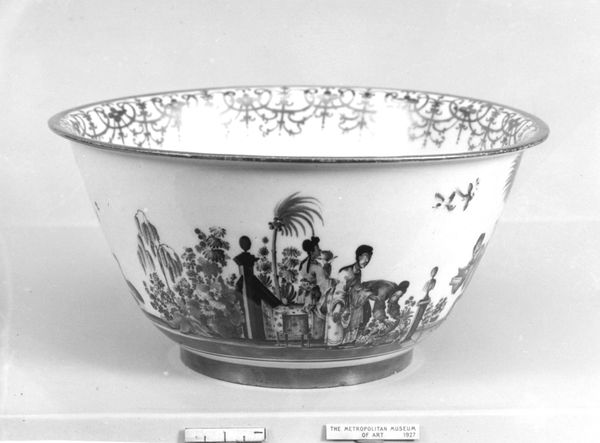
drawing, ceramic, porcelain, sculpture
#
drawing
#
baroque
#
asian-art
#
landscape
#
ceramic
#
porcelain
#
figuration
#
sculpture
#
decorative-art
Dimensions: 3 1/8 × 7 in. (7.9 × 17.8 cm)
Copyright: Public Domain
Curator: Here we have a piece entitled "Bowl," crafted sometime between 1715 and 1735 by the Meissen Manufactory. It’s currently held here at the Metropolitan Museum of Art. Editor: It’s delicate. At first glance, it feels almost monochromatic, like a detailed pen and ink drawing transferred onto porcelain. The silhouetted figures create a really interesting rhythm around the bowl’s circumference. Curator: Absolutely. What’s fascinating is Meissen's early 18th-century attempt to capture the aesthetics of Asian art. The scenes depicted definitely borrow from Chinoiserie, a European interpretation of Chinese artistic styles which was all the rage at the time. This bowl reveals a lot about global trade, colonial ambition and art’s role in that cultural exchange. Editor: From a material perspective, it’s important to note the intensive labor needed to produce such refined porcelain. Consider the mining of the raw materials, the precise mixing of the paste, the skilled hand of the painter rendering that delicate landscape, and the intense heat of the kiln. Each stage is incredibly complex. It's really decorative art elevated through meticulous craftsmanship. Curator: It also says something about consumption, doesn't it? Owning pieces like this spoke volumes about wealth and status during the Baroque period. They become tools that reinforced societal hierarchy and aesthetic preferences. Think about the elaborate rituals that evolved around tea, which further impacted on porcelain’s rising significance in elite circles. Editor: Precisely, and understanding the making is as crucial as examining the market for such pieces. I always find it humbling to think about the number of hands and amount of time that it takes to make one single item such as this porcelain bowl. Curator: Well, by considering the bowl within the social framework, from its production right through its usage, the seemingly simple decorative object reveals layers of complex cultural values at play. Editor: I agree; examining the materials, process, and social implications allows us to better appreciate the artistry that gives life to the piece, far beyond the merely decorative.
Comments
No comments
Be the first to comment and join the conversation on the ultimate creative platform.
